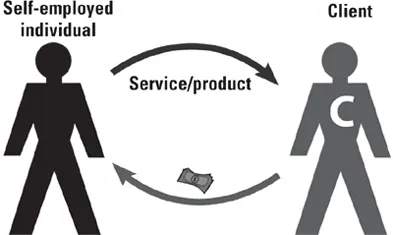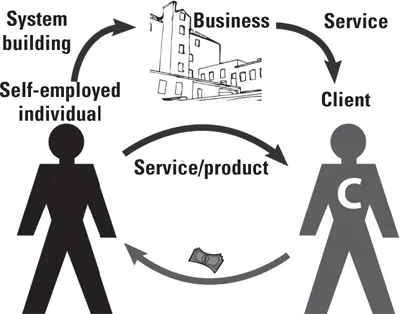![]()
![]()
Doers, dreamers and saints
If I told you I was a doctor, or a lawyer, or even a teacher, you would probably have some idea of what my job involved. But what if I tell you that I’m an entrepreneur? What mental image will form in your head? The chances are that my telling you that I’m an entrepreneur will not tell you much about what I actually do. There really is no universally accepted definition or understanding of what exactly constitutes this journey we call ‘entrepreneurship’.
Having chosen to dedicate my life to growing entrepreneurs, I am constantly on the lookout for new definitions and ways of understanding what it means to be an entrepreneur. Over time, I have found more than 500 definitions of what an entrepreneur is and does! I think it is safe, therefore, to say with confidence that all entrepreneurs have three major things in common: They see an opportunity, take a risk and, in so doing, create value.
I once found this description of an entrepreneur: ‘a determined, decisive, dedicated doer and dreamer’.i That’s quite a list of attributes. And, recently, I came across the following response to an article on entrepreneurship:
And so I Googled ‘Mother Teresa + Entrepreneur’ and, lo and behold, came across an article entitled ‘Mother Teresa: My Marketing Hero’, which went on to describe Mother Teresa as ‘one of the greatest entrepreneurial marketing geniuses the world has ever known’.ii
Now, all these writers may very well be correct. I am not arguing for, or against, any of their ideas or definitions of entrepreneurship. But, it seems to me that the word ‘entrepreneur’ has become a catch-all term for all kinds of people in business. I don’t want to add to the confusion about what characterises an entrepreneur. But, because this book is about entrepreneurship, it’s important that I make it clear right at the outset that, when I use the word ‘entrepreneur’, I am referring to a specific type of entrepreneur, i.e. the growth entrepreneur. Before I expand on this, I want to state that I am not in the business of judging others – there is space enough for all kinds of businesspeople and entrepreneurs. I am not judging the choices people make when they go into business. I am, however, suggesting that not all people who start their own businesses are growth entrepreneurs. It took me many years to work out that I was indeed a growth entrepreneur. Now that I know, I believe that, before you choose to undertake a business endeavour, it helps to know what type of entrepreneur you are, or want to be.
Essentially, there are three types of entrepreneurs:
Subsistence entrepreneur. These entrepreneurs own, and generally are, their own one-man band businesses. The business has no real value in that it relies completely on the entrepreneur and generally does not make consistent profits.
Lifestyle entrepreneur. Like the subsistence entrepreneur’s business, the lifestyle entrepreneur’s business also has no substantial value in that it cannot be sold without the entrepreneur. However, the lifestyle entrepreneur’s business does make consistent profits, and the profits are sufficient to sustain the entrepreneur’s lifestyle.
Growth entrepreneur. This entrepreneur’s business does have value and relies decreasingly on the entrepreneur. It may, or may not, be making profit but it has the potential – without the entrepreneur – to generate profit.
Each of these entrepreneurs is important in an economy; each is equally valid. But, when I talk about entrepreneurs, I am talking about growth entrepreneurs. Let’s look more closely at the differences between lifestyle and growth entrepreneurs.
![]()
Lawyers, plumbers and other lifestyle entrepreneurs
A lifestyle entrepreneur is the traditional one-man band, or even a member of a small three- to five-person operation. Many lawyers and plumbers are good examples of lifestyle entrepreneurs. If my lawyer or plumber is ill or chooses to go on holiday, he is unavailable to provide me with a service and cannot, therefore, receive income. I recently returned a gas canister to my local hardware store. The owner advised me to leave my empty canister and come back in two weeks’ time to fetch a new one. ‘I’m going overseas for a family wedding,’ he explained, ‘and the shop will be closed while I’m away.’ This man owns and runs a shop but the fact that his shop cannot exist without him makes him a lifestyle entrepreneur. What this means is that he aims to use his own knowledge and expertise to offer the best possible value to his clients. He offers value to his customers in terms of service and convenience. But, without him, there is no service or convenience; without him, the shop is closed!
The wealth-creation strategy of lifestyle entrepreneurs is to increase their revenue by increasing their own value to the client. A good example of this is the family doctor who becomes a specialist. By investing in further education, the doctor may improve his skills and become a surgeon. He can then charge much more for his services. This does not, however, make the surgeon a growth entrepreneur – it makes him a highly skilled professional in his own business. Without him, there is still no business!
Although to many people the hardware store owner may seem more like an entrepreneur than the surgeon, both have an equally valid claim to entrepreneurship – after all they both run a business! By my definition, growth entrepreneurs build businesses beyond themselves. Neither the hardware store owner nor the surgeon can go on leave without closing their business down. And this, for me, is the litmus test. When the surgeon invests in a practice, takes on partners and hires staff, he begins to move away from a lifestyle to a growth orientation.
![]()
Where does the value lie?
When Raizcorp first started, I was it; Raizcorp was me and my dream. To grow, I had to bring in new partner companies: businesses that Raizcorp could incubate. In persuading these companies to join, I was essentially selling myself – what I, Allon, could offer them. After all, I was the business; the business was me.
By the time the thirtieth new partner company came on board, Raizcorp had grown too large for me to be personally involved in the intake process. I no longer take part in the recruitment of potential Raizcorp partners. The process is handled by other role-players at Raizcorp. I often don’t meet the company owners until all the paperwork is signed and sealed. Raizcorp is no longer Allon Raiz. I have removed myself almost completely from the function of recruiting partner companies.
The fact that new people can join Raizcorp, and that I am not involved in the process, fills me with excitement. For many entrepreneurs, the prospect of making themselves ‘redundant’ in the processes of their own business is a scary thought. Many entrepreneurs are control freaks. But, like the hardware store owner, holding on too tightly keeps the business small. When we let go of the reins, we allow the horse to pick up speed.
At first, Raizcorp’s partner companies were buying into me as a person. I offered them my knowledge and experience in the hope that they would buy into my vision. At that time, Raizcorp’s ‘value proposition’, i.e. the tangible results to a partner company of using the services of Raizcorp, lay entirely within Allon Raiz. A business’s value proposition answers the questions: ‘What makes you different?’ and ‘What value will you deliver to your clients?’ In the early years of most businesses the value proposition lies wholly within the entrepreneur. Raizcorp’s growth is the result of a gradual process in which its value proposition has moved from lying within me to a place where it now lies within the business. And that is the secret to growing a business.
The difference between being a lifestyle entrepreneur and being a growth entrepreneur lies squarely within understanding the concept of value proposition. When you are a lifestyle entrepreneur, the value proposition lies within you. When you are a growth entrepreneur, the value proposition lies within the business. By growing the value proposition of your business, you move from being a self-employed one-man band towards becoming a business run by an entrepreneur who focuses on growing the business’s value proposition. As you grow the business, you make it increasingly attractive to customers or clients, thereby generating the profits needed to employ people who, in turn, should also increase the business’s value proposition. It is an endless, but vital, loop to success.
Today, the value proposition of Raizcorp lies in its ability to offer its partner companies an infrastructure, personnel, training, mentoring, coaching, sales, and a community of like-minded people. The value proposition has moved far beyond the individual who began the business.
![]()
Different strategies
When I train people, I use these diagrams to help explain the concept of value proposition and how to shift the value proposition from the individual (entrepreneur) to the business.
Diagram 1: The business is the individual; the value proposition to the client lies in this person; the individual provides a service and the client pays for it.
Diagram 2: Although the entrepreneur has grown his business, he remains the link between the client and the business. The value to the client lies within both the entrepreneur and the systems he has set up in the business. The client pays the entrepreneur who then uses the money to continue building value-creating systems.
Diagram 3: The business systems are sufficiently established so that the entrepreneur no longer needs to be an integral part of the value loop. The client pays the business for the services he receives, which are independent of the entrepreneur’s input. The business provides value, the client provides the business with payment, and the entrepreneur reaps a financial reward without being directly involved in the transaction. This reward may be in the form of a salary, dividends or profit share.
![]()
Attitudes to growth
I was explaining the difference between lifestyle and growth entrepreneurs to a graphic designer who has had his own business for a few years. He challenged my view: ‘My clients don’t pay me,’ he said. ‘They pay my company.’ I then asked him if any...







